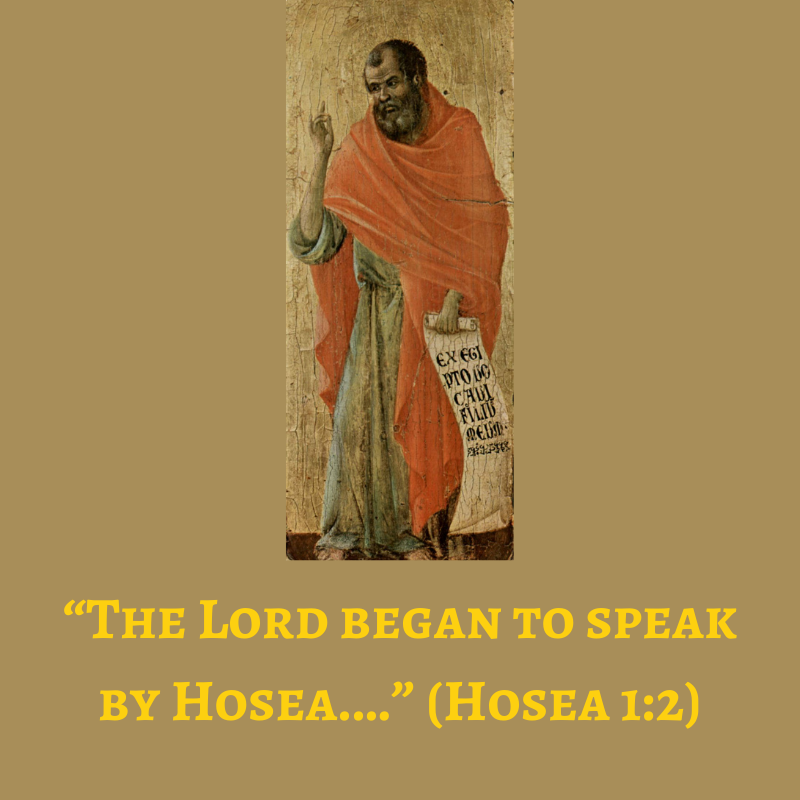
I am looking at four Old Testament passages to help us understand the resurrection language in Paul’s “rapture passage.” He said,
The dead in Christ will rise first. Then we who are alive and remain shall be caught up together with them in the clouds to meet the Lord in the air. And thus we shall always be with the Lord. (1 Thess 4:16–17)
I examined Isaiah 26:17–21 (here) and Ezekiel 37 (here) in previous posts. Both passages use resurrection language to describe the future (to them) transition from the Mosaic age to the messianic age. After her resurrection, Israel would “fill the face of the world with fruit” (Isa 27:6) and God would magnify himself and “be known in the eyes of many nations” (Ezek 28:23).
This post will look at the third passage. In it, Hosea spoke of Israel’s birth pains as a prelude to her resurrection.1 Through him, God said,
O Israel, you are destroyed, but your help is from Me. I will be your King; where is any other, that he may save you in all your cities?… The iniquity of Ephraim is bound up; his sin is stored up. The sorrows of a woman in childbirth shall come upon him. He is an unwise son, For he should not stay long where children are born. I will ransom them from the power of the grave; I will redeem them from death. O Death, I will be your plagues! O Grave, I will be your destruction! (Hos 13:9–14)
The HCSB has a marginal reading for verse 13: “Labor pains come on him. [Ephraim] is not a wise son; he will not present himself at the opening of the womb for sons” (Hos 13:13). This emphasizes a comment John Gill made on this verse:
Now this time is the time of the Gospel dispensation, the time of the Messiah’s birth, the fulness of time appointed for his coming, and the time of the church’s bringing forth many children in a spiritual sense; see Isa. 54:1; Gal. 4:26, 27. for which Ephraim or the ten tribes should have waited, but did not, which was their folly and their ruin; they did not stand, or continue, in the belief and expectation of the Messiah, and; in the true worship of God, but left that, and served idols; and so continued not to the times of the Messiah, when the blessings mentioned in the following verse would be obtained and enjoyed.2
This helps us see the reason God said Ephraim (i.e., Israel) was unwise.
Jon Levenson says John Day found parallels between Isaiah 26:19 and Hosea 13–14.3 One especially interests us: “The case of allusions to unproductive birth pangs followed directly by references to … resurrection of the dead seems unlikely to be coincidental.”4 Both prophets link Israel’s birth pains to her resurrection.
But Levenson does not mention an important distinction between the flow of these two prophecies. Isaiah gives the following sequence: (1) Israel’s resurrection with the Messiah (Isa 26:19; cp. Rom 13:11; Eph 2:1, 5–7; 5:14), then (2) God’s judgment of “the inhabitants of the land” (Isa 26:20–21), which Jesus equated with the messianic birth pains (cp. Matt 24:8 ESV). But Hosea gave a different order: (1) Israel’s birth pains (Hos 13:13), then (2) her resurrection from the grave (Hos 13:14).
The New Testament says Hosea’s resurrection will occur at the end of the messianic (kingdom) age. Paul said,
Then comes the end, when He delivers the kingdom to God the Father, when He puts an end to all rule and all authority and power. For He must reign till He has put all enemies under His feet. The last enemy that will be destroyed is death.… For this corruptible must put on incorruption, and this mortal must put on immortality. So when this corruptible has put on incorruption, and this mortal has put on immortality, then shall be brought to pass the saying that is written: “Death is swallowed up in victory.” “O Death, where is your sting? O Hades, where is your victory?” (1 Cor 15:24–26; 53–55; cp. 2 Cor 5:4; Phil 3:21; Rev 20:13–14)
Speaking of 1 Corinthians 15:55, John Gill says, “These words, with the following clause, are taken out of Hos. 13:14.”5
Combining these passages we have the following sequence: (1) Israel’s resurrection in Christ, (2) the messianic birth pains, (3) the resurrection at the end of the messianic (kingdom) age.
I want to make two points that will affect our interpretation of Paul’s “rapture passage” (1 Thess 4:13–5:11). First, this sequence fits well in the inmillennial prophetic model with the understanding that the “great tribulation” comprised the messianic birth pains:6

Second, Hosea linked Israel’s birth pains to the resurrection at the end of the messianic age. This is an example of a common prophetic device that modern commentators call prophetic foreshortening. As Walter Kaiser says,
Almost all interpreters note … a phenomena known as prophetic foreshortening. The perspective of the prophet in certain predictive passages often simultaneously included two or more events that were separated in time at their fulfillment, yet, there often was no indication of a time lapse between these various fulfillments in the predictive word as they were originally given.7
This practice does not mean the prophets were unaware of the messianic age that would follow Israel’s birth pains and precede the resurrection of God’s people; both Isaiah and Hosea described the intervening age. But Hosea joined the ultimate effect of the messianic age—the banishment of physical death—to one of its beginning causes, Israel’s messianic birth pains.
The Scriptures contain many examples of prophetic foreshortening. A brief passage in which God spoke to Jacob at Bethel contains two:
I am the LORD God of Abraham thy father, and the God of Isaac: the land whereon thou liest, to thee will I give it, and to thy seed; and thy seed shall be as the dust of the earth, and thou shalt spread abroad to the west, and to the east, and to the north, and to the south: and in thee and in thy seed shall all the families of the earth be blessed. (Gen 28:13–14)
God would not fulfill the land promise for at least four hundred years, after Israel’s captivity in Egypt. God had told Abraham about this sojourn (cp. Gen 15:13), but he does not mention it when speaking to Jacob. God did not fulfill his promise that “in thy seed shall all the families of the earth be blessed” for fifteen centuries (cp. Acts 3:25). And he did not mention that the Mosaic age would intervene.
Conclusion
Paul wrote to the Thessalonians about these same prophetic elements: the resurrection of Christ (e.g., 1 Thess 4:14), Israel’s messianic birth pains (e.g., 1 Thess 2:14–16), and the resurrection (e.g., 1 Thess 4:16–17). We should expect him to employ the same devices the prophets used, including prophetic foreshortening.
Lord willing, my next post will examine the fourth Old Testament resurrection passage, Daniel 12:1–7. I will then apply the lessons we have gleaned from them to Paul’s “rapture passage” (1 Thess 4:13–5:11).
Footnotes
- The image in this post is The Prophet Hosea by Duccio di Buoninsegna (1255–1319). This file (here) is in the public domain (PD-US).
- John Gill, An Exposition of the Old and New Testaments, 9 vols. (1809–10; repr., Paris, AR: The Baptist Standard Bearer, 1989), 6:449 (emphasis added).
- Jon Douglas Levenson, Resurrection and the Restoration of Israel: The Ultimate Victory of the God of Life (New Haven, CT: Yale University Press, 2006), 202.
- Levenson, Resurrection and the Restoration of Israel, 204.
- Gill, “Exposition,” 8:745.
- See Michael A. Rogers, Inmillennialism: Redefining the Last Days (Tullahoma, TN: McGahan Publishing House, 2020), 263. This book is available here in hardcopy and here as a PDF. A free summary PDF document of inmillennialism is here.
- Walter C. Kaiser, Jr., The Uses of the Old Testament in the New (Chicago: Moody Press, 1985), 63.

2 comments
I just read this post (sorry, been busy so am a bit behind), and noticed the part about Ephraim not presenting himself for the birth. Do you think it significant or any way related to this, that in Revelation when it speaks of the 144,000, that it leaves out the name of Ephraim (though it has Manasseh)?
Kathy,
I stand in amazement once again at your insights! You must have a special spiritual gift or something. I have never read a commentator who made your earlier observation about the Song of Moses. Now, I can’t recall anyone noting that John does not list Ephraim in Revelation 7:4–8. Amazing!
Yes, I think there is a strong possibility that this list of tribes reflects the marginal reading of Hosea 13:13 HCSB.
Thank you once more!
Mike